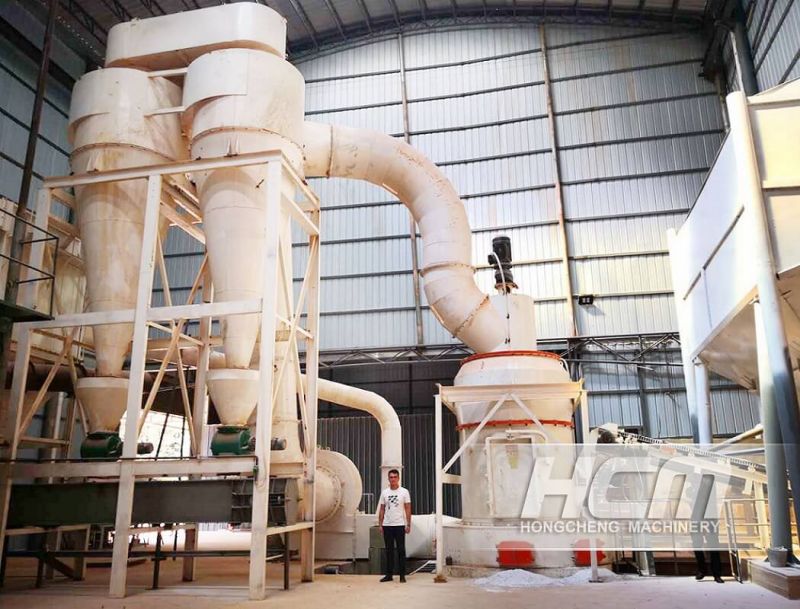The cement manufacturing industry is an important basic raw material for the development of my country’s national economy, but it is also one of the main sources of carbon emissions. Carbon reduction in the cement industry is difficult. How to save energy, reduce consumption and decarbonize the clinker calcination process is a key proposition for the cement industry to achieve low-carbon production. As a manufacturer of industrial solid waste grinding mills, the grinding equipment produced by HCM Guilin Hongcheng Machinery provides good equipment assistance for replacing cement raw materials with industrial solid waste. Today I will give you a detailed introduction.
1. What pollution does the cement industry cause? Carbon emissions in the cement industry mainly come from clinker production, whose main raw materials are limestone, sandstone, and aluminum-iron raw materials. The high-temperature decomposition of these raw materials in the pyrolysis furnace will produce a large amount of CO2, which accounts for most of the carbon emissions from cement production.
2. What is raw material substitution? Raw material substitution technology refers to the use of carbide slag, fly ash, steel slag, calcium silicate slag, etc. to replace limestone as raw materials for cement production, thereby reducing CO2 emissions during the calcination of raw materials. Raw material substitution is the most effective low-carbon production method. Limestone will produce a large amount of CO2 in the decomposition furnace. Using calcium-rich waste to replace high carbon-loaded raw materials such as limestone can significantly reduce CO2 emissions. Fuel substitution serves multiple purposes. It can not only reduce carbon emissions, but also co-dispose of waste and garbage.
3. What are the raw material substitution processes?
1). Carbide slag replacement: During the process of producing acetylene, carbide slag will produce a large amount of carbide slag waste. Carbide slag is mainly composed of 70% Ca(OH)2 and is easier to decompose than limestone.
Steel slag replacement: Steel slag is mainly composed of oxides of Ca, Mg, Fe, Si, Al and other elements, and contains most of the raw material components for cement production. If the calcareous raw materials in the raw meal are replaced, the CO2 emissions caused by the decomposition of limestone can be effectively reduced during the clinker production process.
2). Quartz sludge replacement: Quartz sludge is the waste sludge left after crushing, washing, screening, drying and refining silicon from quartz ore mined in quartz sand plants.
3). Papermaking sludge replacement: Papermaking sludge now contains calcium, silicon, aluminum, iron, magnesium and other elements, and has a high Al2O3 content, which can replace aluminum correction raw materials in cement production.
Vigorously carrying out research and large-scale application of replacing cement raw materials with industrial solid waste can significantly reduce the consumption of natural mineral resources and energy, which is one of the important ways for my country’s cement industry to achieve green and sustainable development. The HLM series industrial solid waste grinding mill produced by Guilin Hongcheng is suitable for grinding industrial solid waste such as calcium carbide slag, steel slag, papermaking white mud, etc., and provides equipment assistance for industrial solid waste to replace cement raw materials. If you have relevant needs, please contact us for details of the equipment. Email address:hcmkt@hcmilling.com
Post time: Nov-13-2023









